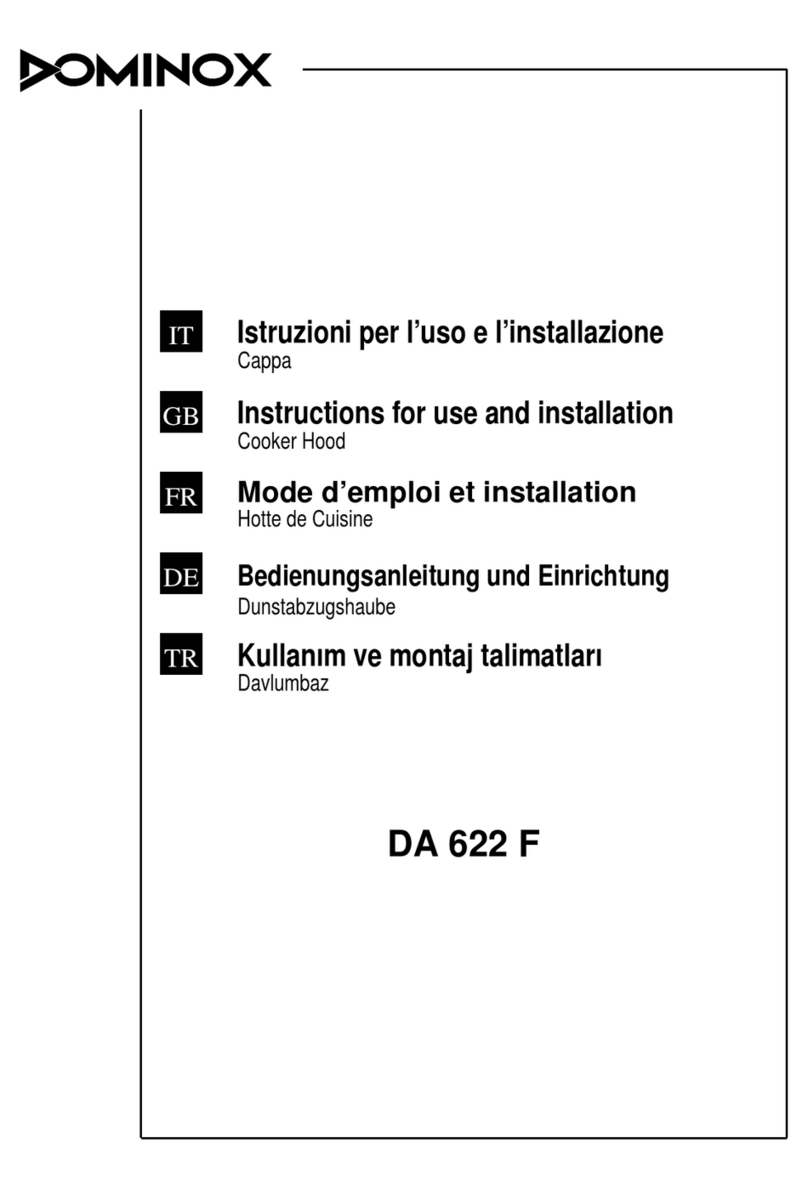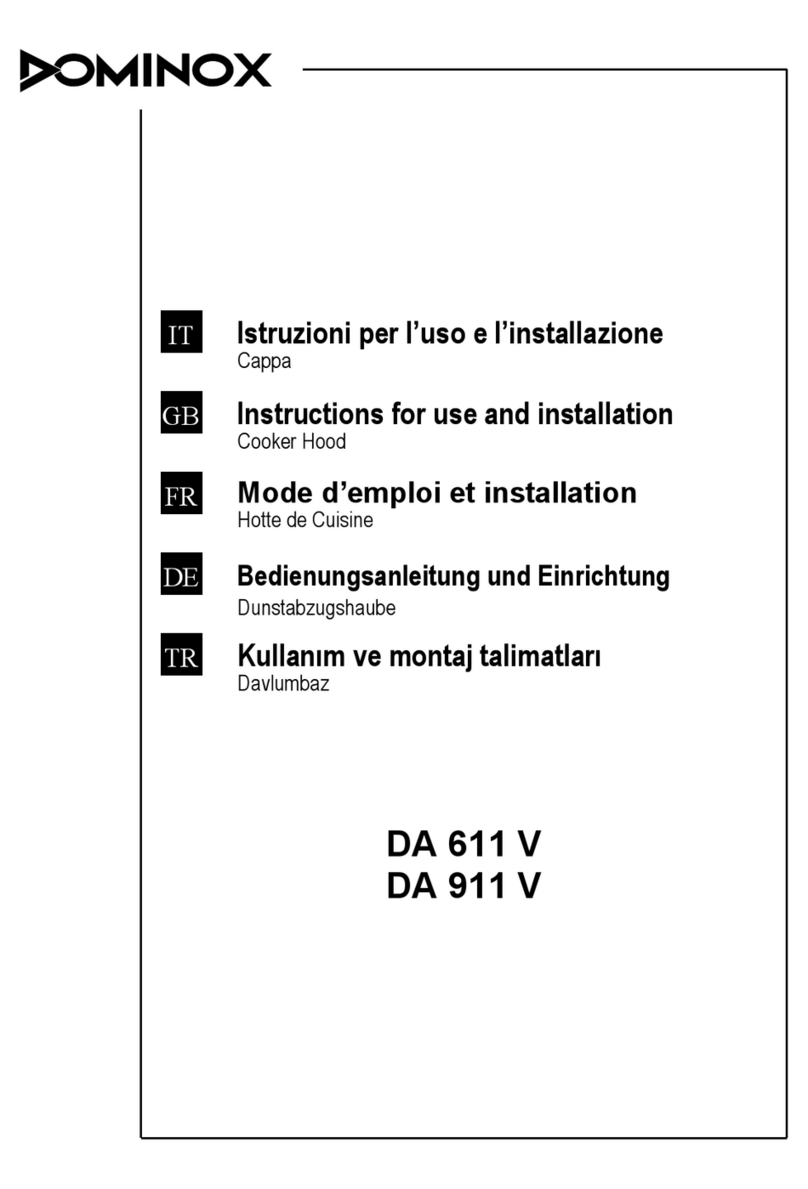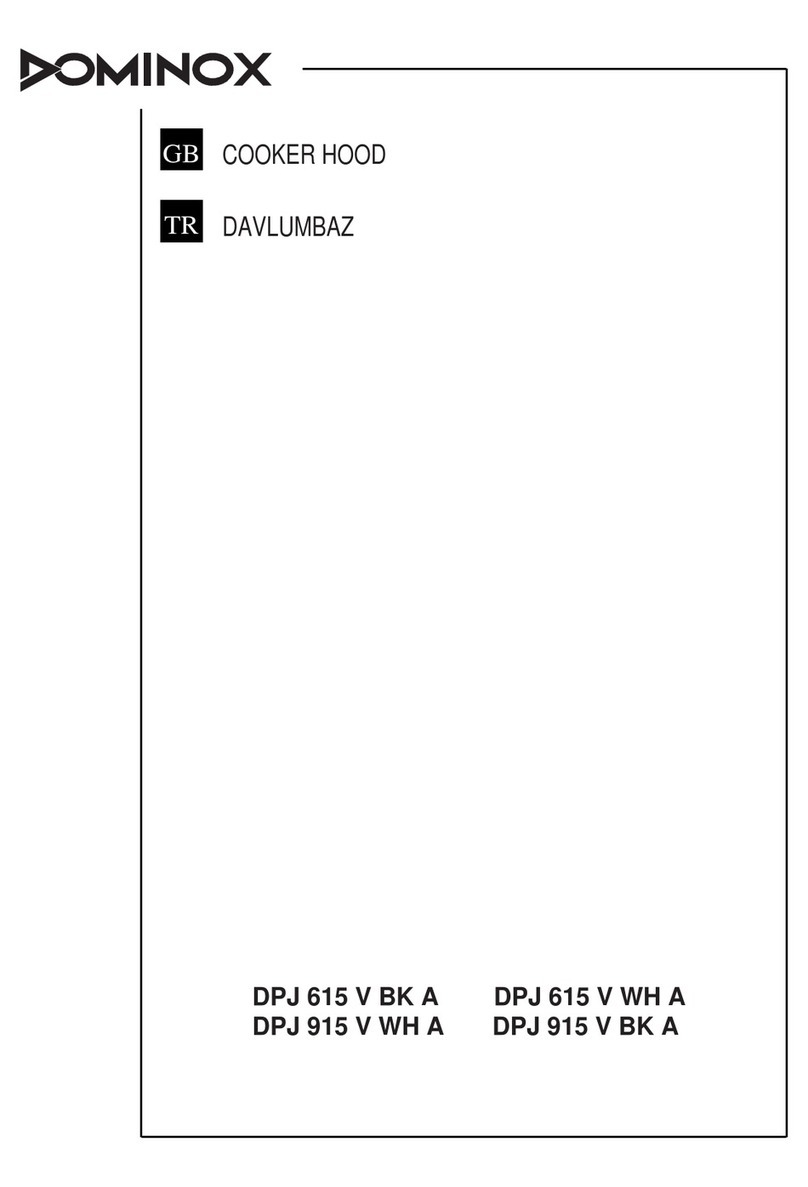
9
9
USO - MANUTENZIONE
USO
Vi raccomandiamo di far funzionare l'apparecchio poco prima di procedere alla cottura di
qualsiasi vivanda e di lasciar funzionare lo stesso ancora per 15 minuti dopo la cottura, co-
munque fin tanto che ogni odore sia scomparso.
1) Quadro comandi con interruttori
- Un interruttore che comanda l'accensione dell'impianto di illuminazione.
- Un interruttore per commutare le tre velocità d'esercizio.
- Una generica spia di segnalazione motore in funzione.
2) Quadro comandi con pulsanti
- Un pulsante che comanda l'accensione del motore in prima velocità, adatta ad un ricambio
d'aria continuo particolarmente silenzioso, in presenza di pochi vapori di cottura.
- Un pulsante che comanda il motore in seconda velocità, adatta alla maggior parte delle
condizioni di uso, dato l'ottimo rapporto tra portata d'aria trattata e livello di rumorosità.
- Un pulsante che comanda il motore in terza velocità, adatta a fronteggiare le massime e-
missioni di vapori di cottura, anche per tempi prolungati.
- Un pulsante che comanda l'accensione dell'impianto di illuminazione.
MANUTENZIONE
N.B. Prima di qualsiasi intervento di manutenzione, riparazione ed eventuale sostituzione lam-
pade, disinserire l'apparecchio dalla rete elettrica.
1. Illuminazione
E' costituita da due lampade da 40 W. Per effettuare una sostituzione operare come segue
(fig.10):
Togliere uno dei perni ai lati della plafoniera. Far scorrere il vetro verso il lato senza perno
fino a liberare la punta opposta, quindi tirare leggermente verso il basso.Sostituire le lam-
pade e rimontare il vetro con sequenza opposta.
2.Filtri
Ad intervalli più o meno frequenti, secondo l'uso della cappa, comunque una volta ogni 2
mesi, i filtri metallici debbono essere smontati e lavati con acqua calda saponosa, o diret-
tamente lavati in lavastoviglie e rimontati asciugati (i filtri in carbone attivo non devono
essere assolutamente lavati e devono essere sostituiti ogni 2 mesi).
3.Pulizia
Per la pulizia esterna della cappa utilizzare un panno umido con alcool o con prodotti adat-
ti reperibili in commercio. Evitate di usare degli elementi abrasivi.
IMPORTANTE: L'impiego di fiamma libera è dannoso ai filtri, pertanto è sconsigliato di
lasciare acceso un bruciatore a gas senza pentola. È obbligatorio mettere in atto le opera-
zioni di pulizia della cappa o dei filtri, non che la loro periodica sostituzione secondo le
nostre istruzioni per evitare pericoli di incendio.
ATTENZIONE: La casa produttrice non risponde degli eventuali danni causati dalla
mancata manutenzione del filtro antigrasso (lavaggio ogni due mesi), sostituzione del filtro
carbone ed il non rispetto delle istruzioni di montaggio ed allacciamento elettrico sopra de-
scritte.

































